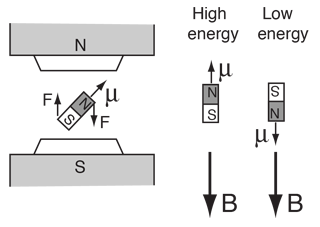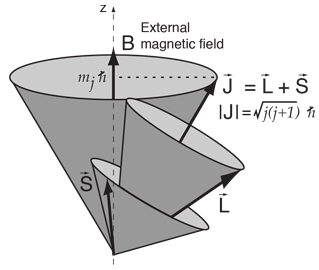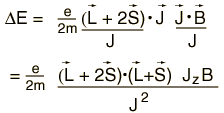Magnetic Interactions and the
Lande' g-Factor
 A magnetic moment experiences a torque in a magnetic field B. The energy of the interaction can be expressed as  Both the orbital and spin angular momenta contribute to the magnetic moment of an atomic electron.  where g is the spin g-factor and has a value of about 2, implying that the spin angular momentum is twice as effective in producing a magnetic moment. |
The interaction energy of an atomic electron can then be written  which when evaluated in terms of the relevant quantum numbers takes the form   Show evaluation process |
| Zeeman interaction | Anomalous Zeeman effect |
Schrodinger equation concepts
Hydrogen concepts
| HyperPhysics***** Quantum Physics | R Nave |









